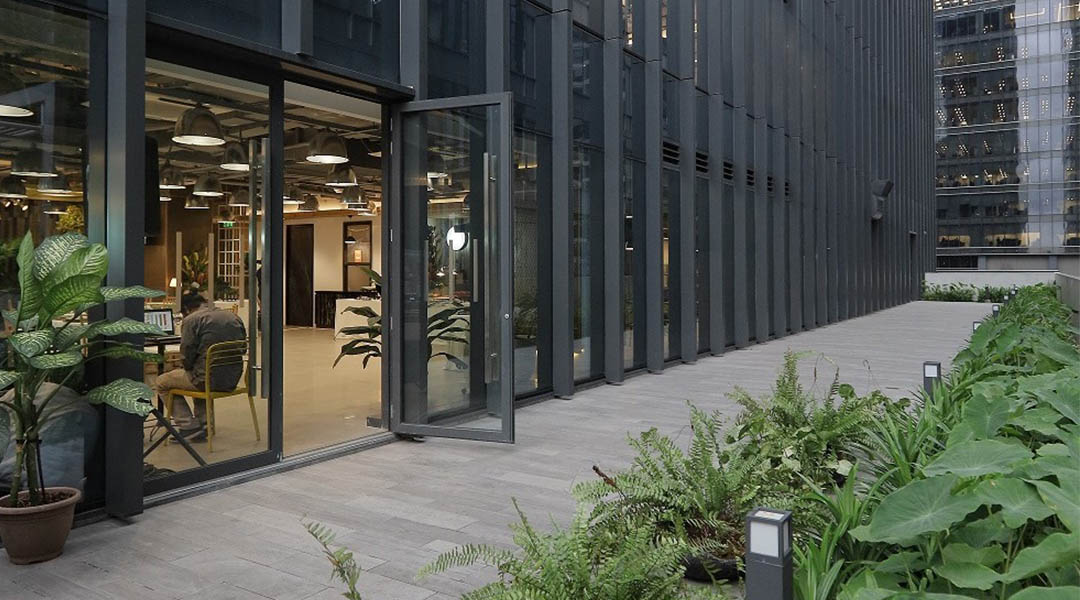“Let us greet this world crisis the way we tackle each new project – as a challenge to be inventive, expressive, and definitive. Let us approach this crisis as a defining moment, an opportunity to affirm what we believe and live for, and we are far more likely to emerge stronger from the storm, with those things we most cherish still intact,” Tina Periquet, principal designer of Periquet Galicia clinched her presentation, ‘Reaching Beyond Our Grasp: The Virtue of Ambition.’ These are words that might be hard to live up to amid a crisis, especially for young designers who have just started their careers and are still developing and defining their values. How can one find clarity, aim higher, and push for excellence in times of uncertainty?

It starts with a manifesto
In a previous interview with former BluPrint editor-in-chief Judith Torres, she said: “A good manifesto expresses your conviction and commitment. You declare your beliefs, how you intend to live your life, and why you are all-in to fight for your cause. A crisis tests your resolve. Designers design our world, and, right now, people are fighting for their lives. Designers—all of us—need to take a stand to build a better world.”
‘Manifesto’ and what it means might be daunting to some people. Spacefabrik Principal Architect and live session reactor Stephanie Tan-Branquinho bravely confessed that her manifesto is still a work in progress. The first poll question during the ‘Excellence in Times of Crises’ live session revealed that Tan-Branquinho is not the only one. Results from 270 participants showed that 29% have not written a manifesto yet but are thinking about it, 27% have a manifesto but have not put them into writing, and 19% have not thought of having one.
YOU MIGHT LIKE: Tolentino’s Manifesto
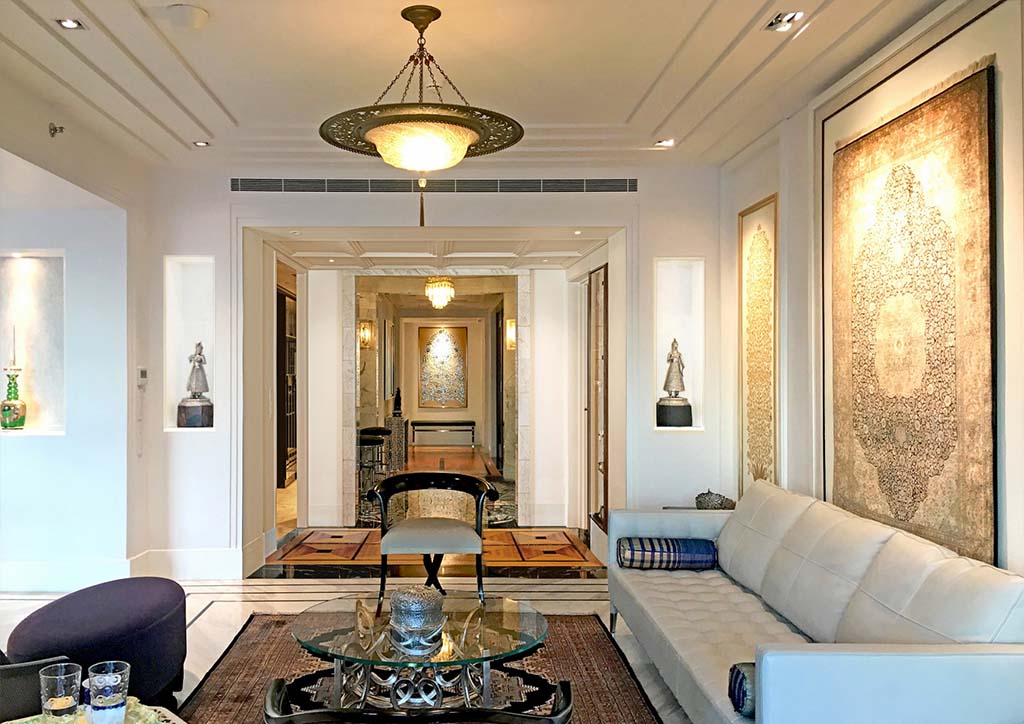
Periquet shared what she used to ask her design course students to help identify their core values: “What values have you fought for?” She revealed that values are personal to everyone, and one will realize that what a person has fought for is more important than what a person professes to value.
In her presentation, Periquet said, “We all want to feel that we are creating works that are relevant and significant. If we want to achieve this, we should start by aiming beyond what is given.” This statement reveals Periquet’s commitment to excellence—the subject of her presentation and the inspiration of the live session ‘Excellence in Times of Crises.’ The interior architect, lighting designer, and principal designer underscored: “To be relevant, our works must be visionary, authentic, lasting, universal, and excellent.”

BluPrint asked about the live session participants’ life values. A majority chose “authenticity, integrity, honesty, truth;” “balance, harmony, peace;” and “compassion, empathy (malasakit).” Another poll asked about their design values, and the result shows that “function, efficiency, purpose,” “balance, beauty, harmony,” and “timelessness, strength, durability” are the most valued.
READ MORE: Menarco CEO: Healthy Buildings Are a Human Right
Carmen Jimenez-Ong, founder and CEO of Menarco Development Corporation and live session speaker, then asked another crucial question: “Would it (values) really matter five years from now?” She advised to pause, distill all the noise, and not force an immediate answer. “Try not to push for the truth because it will come. In that stillness, it will come,” Jimenez-Ong said. She added that when the truth does come, focus on that truth.

One of the Philippines’ first adapters in integrating human health and wellbeing in building design, construction, and operations, Jimenez-Ong advocates that “healthy buildings are a human right.” Her first WELL Certified Gold, LEED Gold certified, and WELL Health Safety Rated Menarco Tower, also a first in Southeast Asia, is a testament to her core values.
International WELL Building Institute (IWBI) APAC Vice President and live session panelist Jack Noonan echoes Jimenez-Ong’s advice: “Focus on the silver linings. There are so many good things coming out of this process, and what a lot of us would encourage to do is to write down those silver linings . . . Keep track of them because it’s so easy to just be bogged down by all the depressing stuff.
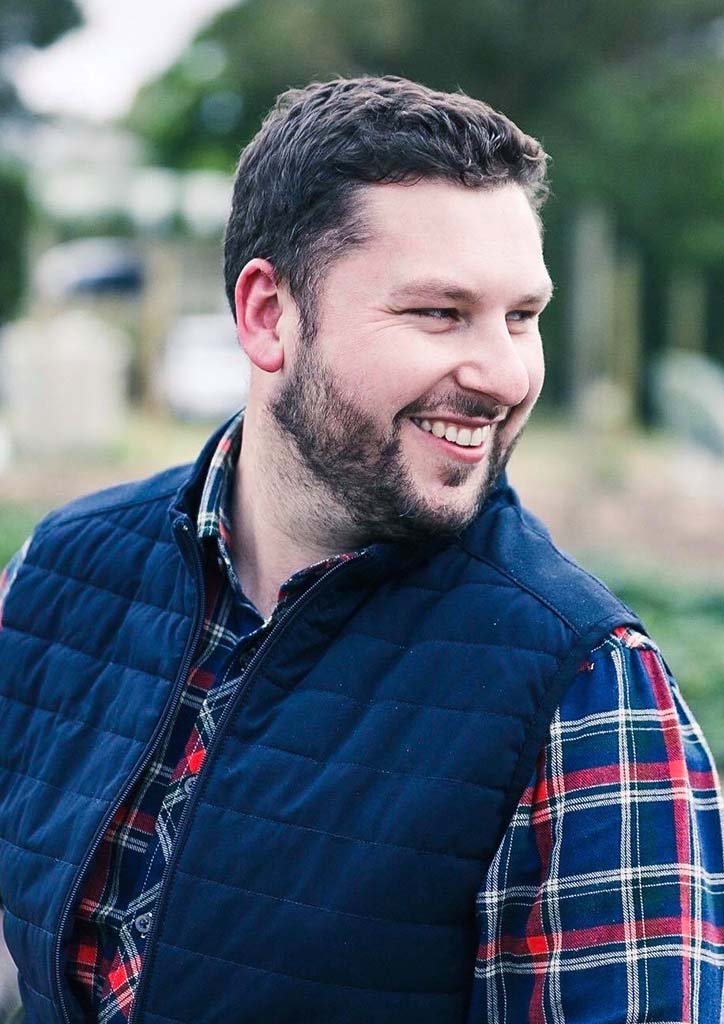
Noonan is passionate about a ‘healthy building revolution,’ which recognizes that “healthy buildings can actually reduce the health and economic burdens of our communities.” In his ‘Healthy Buildings and Healthy People: How a global pandemic can start a revolution of better health, equity, and performance’ presentation, he pointed out: “We need to recognize that our buildings and spaces don’t exist in isolation but are part of a community. Access to health varies based on factors including ethnicity, gender identity, disability status, and location. Our buildings and spaces can contribute to health disparities, or they can promote a more equitable environment.”
Walk the talk, talk the walk
Making a difference starts with having a set of resilient core values, but having this also marks the beginning of many challenges. There will be times when one’s core values will be tested and traded off to meet specific targets. “Does my work reveal my core values?” BluPrint asked the live session participants in another poll. 31% said, “I can’t fulfill all my values all of the time, but that’s what I’m striving for!” 27% said they attract clients who share the same values and agenda. About 9% of the participants struggle to find clients who share their values and do not have a choice but to work on projects that often don’t represent what they stand for.
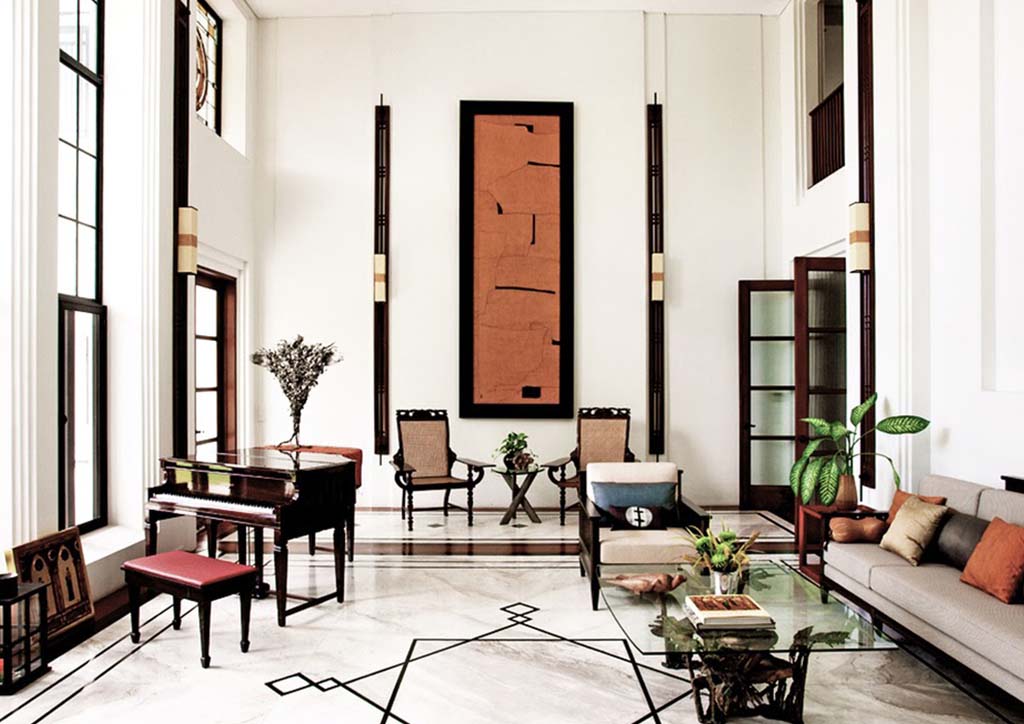
In all the things one does, especially in crisis times, “It is not enough to walk the talk—you need to talk the walk. You need to get people to buy into your goal,” said Periquet. Recalling a conversation she had with her father, Periquet underlined the importance of having a company vision and mission. She narrated that when the firm had achieved a measure of success, she felt like she was struggling to cope with a never-ending workload. “I wondered why it seemed that I was always the one doing all the thinking and driving, and my staff never seemed to be getting it or getting anywhere. And it dawned on me that it might be because I had never actually told them where we were going.”
READ MORE: The National Museum of Natural History – How it began
Periquet tackled how values are seen as negotiable and how serious this problem is. She went back to her experience of teaching a course on design when a student once asked her, “‘But can you change your philosophy, if it turns out you can’t afford it?’” She reminded that “. . . the choices that we make can literally spell the difference between life and death—the survival or failure of our enterprises, and the preserving or abandoning of the ideals we claim to hold.”
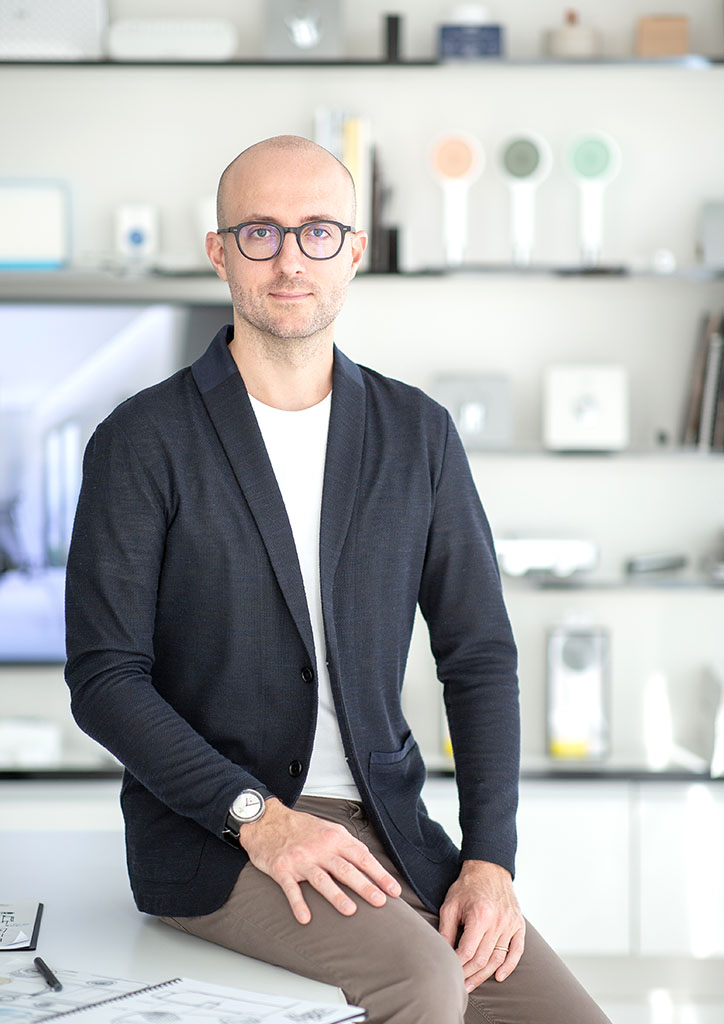
With all the factors, or noise to some, that influence a person’s life and design values, how does one stay on track and not get lost? How does one defend and keep the things one cares about intact? Seek clarity, go back to your why, and develop resilience, advised Antoine Besseyre Des Horts, Periquet’s live session co-panelist. “This is a very simple thing, but ‘why’ for me has been driving everything that I have been through in my entire life, in my entire career. The ‘why’ is what I always get clarity on,” the multi-awarded designer shared.
In his presentation, Des Horts shared a quote he loves: “People ignore design that ignores people.” This philosophy is what he and his team employ in their daily work at LIXIL, a global Japanese group of individual water and housing brands, and the organization behind the ‘Build a Better Normal’ live sessions in the Philippines. The LIXIL Global Design and Consumer Experience – APAC Vice President told BluPrint previously that he believes design is a mindset, which he expounded in his presentation. “It is about truly understanding people and crafting culturally relevant solutions that address real-life issues and enhance their daily lives both emotionally and practically,” he said.
Des Horts pointed out that the entire world is experiencing a scarcity of natural resources and space, which he said will intensify in the future. He cited that by 2050, “nearly 6 billion people will suffer from clean and safe water scarcity” and “75% of the world population is projected to live in urban areas.” To illustrate how LIXIL brands are working on various innovations to address these economic insights, Des Horts referenced blue filter technology, a development by German brand GROHE that turns ordinary tap water into freshwater, reduces carbon dioxide emissions, and eliminates the use of plastic bottles. He also cited the City Collection by American Standard, which converts regular bathrooms into a multipurpose space and prefabricated bathrooms by LIXIL. The prefab bathrooms offer practical benefits such as water-proofing, reduced time, and complexity of construction, and space optimization. “With the rapid growth of the urbanization phenomenon in Asia, and all around the world, people are and will be increasingly looking for solutions that optimize space while gaining convenience and comfort.”
GROHE offers many technical solutions for a personalized spa experience for both public and private applications, which inspire people to maintain a hygienic and healthy lifestyle while also saving on water and energy consumptions. Japanese brand INAX also offers a zen-like spa experience with the functionalities of the western toilet. The brand invented the first shower toilet back in 1967. Des Horts said that the shower toilet “seeks to make this daily bodily function as convenient and fuss-free as possible with anti-bacterial, self-cleaning, even deodorizing and drying features, offering truly enhanced hygiene.”

To address the low water pressure in some parts of Asia, American Standard developed the Genie Hand Shower that features a unique pressure boosting technology, allowing the shower to perform well under poor pressure conditions. The hand shower also has a transparent faceplate for users to conveniently clean the product. To combat the dangers of diarrhea—the second leading cause of death of children five years old and younger, according to the World Health Organization—American Standard also developed the Hygiene Clean System. The system combines powerful and unique technologies with cutting-edge design to fight bacteria, germs, and prevent dirt and stains.
YOU MIGHT LIKE: The DNA of the National Museum of Natural History
To design and build a better environment, where health should be top-of-mind, everyone must share the same mindset. “. . . just keep talking about it and pushing the subject. Eventually, people [will] start changing the mindset, and not seeing it as a nice-to-have,” encouraged Periquet. She shared that in a previous project, “. . . the client trusted my design vision enough to support it all the way through because there were so many challenges and mindsets I had to overcome [to] achieve what I feel in the end is something . . . truly outstanding.”

Periquet lucked out on her clients. But what about those who cannot align their values? Jimenez-Ong cited Harvard Business School’s ‘Wheel of Change’ and said that there’s a whole science on making a difference. In her presentation, ‘More Than a Building: Unlocking the Keys to Creating the Healthiest Spaces in Southeast Asia,’ she said, “. . . we don’t need to sell out our values to make a reasonable profit. As stewards of the spaces we create, which we can’t take to our grave, it is our mission to create spaces that are healthy for the person and for the planet, spaces [that have] the power to heal you and me, and the next generation.”
Reactor Raymond Rufino, CEO of NEO and a proponent of the formulation of sustainability rating system BERDE, has long promoted a safe and healthy lifestyle in his buildings. He advised architects and designers, “. . . don’t give up. We (developers) are a challenging bunch, but please don’t forget that if you can convince us about the directions and the passions, and the things that you believe in, hopefully, we can get things done.”
READ MORE: Grading Green: The case for BERDE over LEED
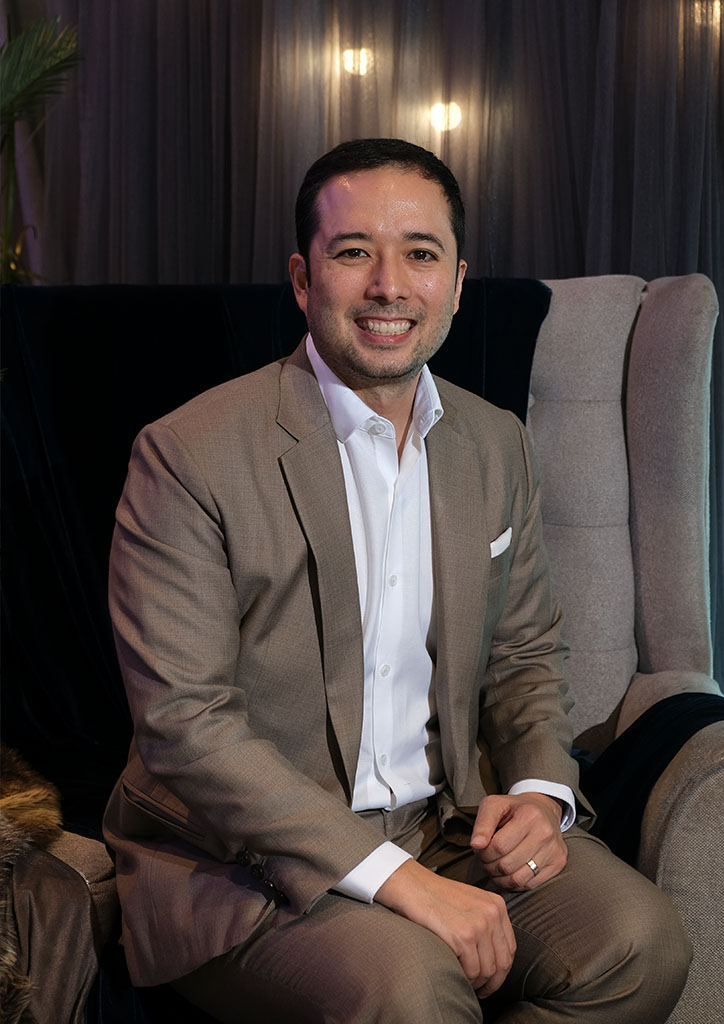
Excellence in times of crises
Criticism and skepticism from the public will be hard to erase, especially when times get rough. Tough times expose many vulnerabilities in health security, city planning, and policymaking, making it hard for citizens to see the silver lining.
“The problem is, our culture tends to frown on naked ambition,” Periquet pointed out. “If you openly aim too high, you are considered arrogant, and people wait for you to fall. So, we stick to the tried and tested, the safe and sure. As the author, Nick Joaquin put it: We think small, and we do small. We laugh at ourselves to avoid being laughed at. But if we don’t take ourselves seriously, no one else will.”
Reactor Joseph Javier Managing Principal of JDSM, added, “This insular mindset of smallness, Joaquin claims, is why greatness has been so elusive for us Filipinos. A mindset of largeness, foresight, and ambition are normally requisites for a culture of excellence.”
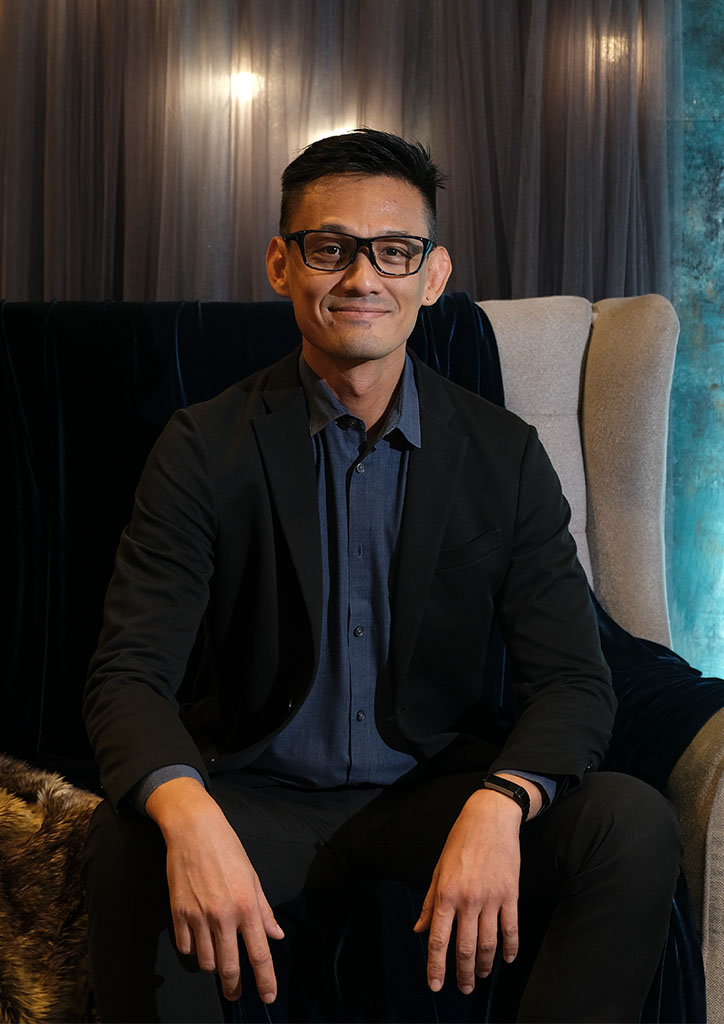
From Noonan’s point of view—as someone from outside this culture of smallness—the ‘largeness’ culture can be incredibly overrated. He said that we tend to forget that behind the impact and scale are individual people, which means anyone can create a huge change at an individual level, by making individual choices. He added, “I completely appreciate this idea of this kind of culture of largeness, but I wouldn’t be saying this as an impediment [to] the Filipino culture. I would actually embrace that because I think we need more of that within the western world rather than the other way around.”
YOU MIGHT LIKE: Is Manila ready for the Big One? This architect says not yet
Are the Filipinos forever doomed, then? Jimenez-Ong said, “Definitely not in the age of the internet, where the exposure is immense, no matter how big or small you are.” She added, “It’s the year 2020, and I love Nick Joaquin, but it’s time to rewrite what it is that has been written about us.”
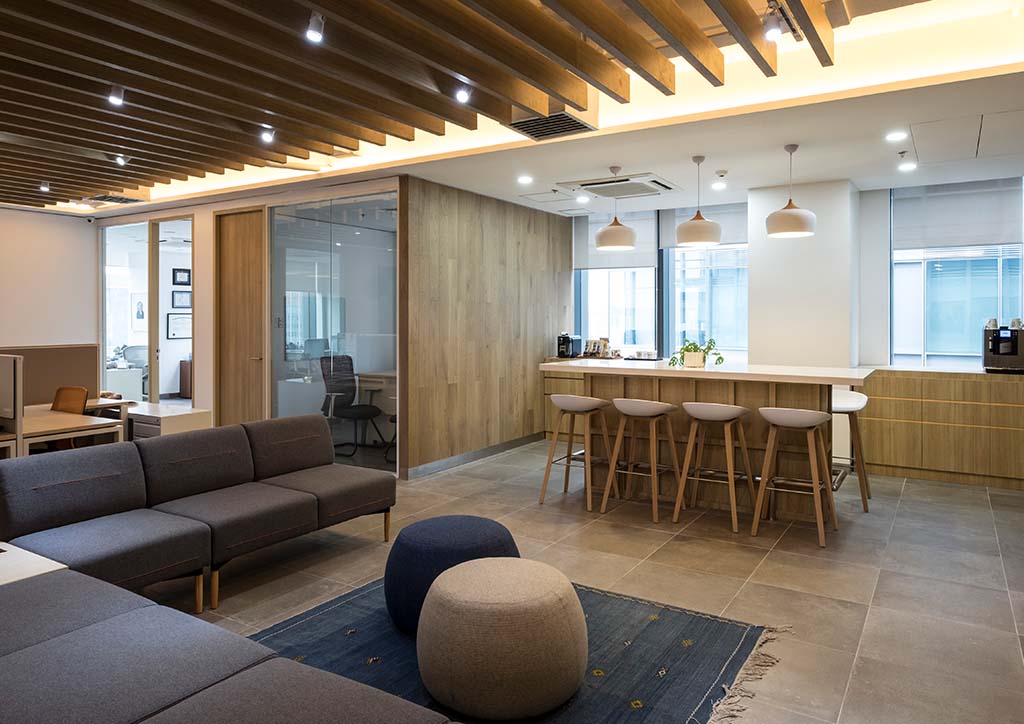
Jimenez-Ong has been one of the great examples of excellence in the Philippines. “I am proud to say that, against the odds, Menarco has actually built the healthiest tower in Southeast Asia in our backyard, in BGC,” she said. Being the first and only development that has achieved a double Gold certification in both WELL and LEED, Menarco Tower is the manifestation of what Jimenez-Ong noted, “a developer who strives for excellence in both what is seen and unseen.” During her presentation, Jimenez-Ong elaborated on how they are keeping Menarco Tower as a healthy building. She enumerated factors such as the presence of a contemporary art museum that employees can go to while taking a break from work; the availability of clean, potable water from the tap; the convenience of a wellness floor, along with a naturally lit fire staircase that can provide free exercise; and so much more.
Noonan, who virtually experienced Menarco Tower through videos sent by Jimenez-Ong and her team, said that he is continually inspired by it. He cited it as a model for Philippine buildings. It was his answer to Rufino’s question on “a particular project that comes to your mind when you hear the word ‘excellence,’’ along with two international projects.
READ MORE: Menarco Tower leads the way with wellness-oriented design
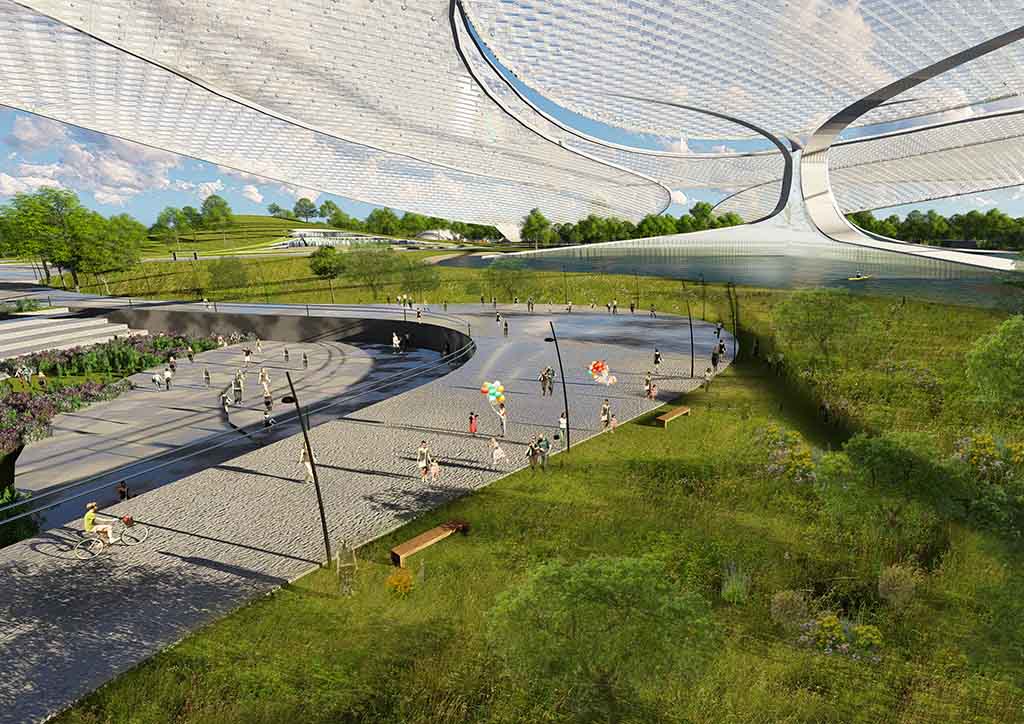
What is Jimenez-Ong’s secret, you may ask? Her answer is simple, “[I]t’s really just having that integrity moving forward. And I think birds of a feather flock together, and there’s many of us or at least a few of us that are quite good in this industry, and there’s enough to keep us all afloat.”
In times of crisis, every stakeholder must come together in addressing the risks and vulnerabilities. When the COVID-19 pandemic magnified the necessity of personal hygiene, health, and wellbeing, LIXIL responded with human-centric solutions. “We know that 40% of the world’s population does not have access to basic hand-washing facilities and soap at home. It’s 3 billion people,” Des Horts pointed out. He cited LIXIL brands INAX and SATO, which feature hand-washing facilities. For public restrooms, INAX offers the 3-in-1 Jetbowl, a product that provides a complete touch-free experience. The Jetbowl “features a hand-washing function, soap dispenser, and a hand dryer in one bowl, arranged in a simple, sequential layout.” Given the pandemic, innovative solutions such as this can reduce energy and water consumption while assisting in health and safety protocols. SATO TAP, on the other hand, is an agile response to the COVID-19 outbreak. “SATO quickly designed and then launched a new hand-washing solution called SATO TAP, which is extremely affordable, and designed to be used anywhere even without having access to a supply of running water,” explained Des Horts.
“It consists of a simple and basic plastic base with a rotating nozzle that can be fitted with widely available plastic bottles in emerging countries and anywhere around the world.”
Building a better normal
Taking excellence not just in the context of the current pandemic but as a mindset that everybody should have, the speakers and reactors talked about staying true to one’s values and fighting for excellence in individual, organizational, and communal aspects.
Towards the end of the live session, Tan-Branquinho thanked all the speakers for sharing their insights. She told the speakers, “…maybe the silver lining with this pandemic is it asks us a really really serious question about how we want to live and I thank you all for being examples for that and setting the path and being steadfast and committed to your convictions.”

The question that Noonan challenged organizations to reflect on is, “How do you bring your values as an organization through your design?” He reminded attendees that there are ways in which health interventions can be brought to projects, citing how passionate the IWBI is in assisting small countries in achieving WELL Certification for some of their projects. “ . . . We can’t just focus on ‘healthy for the wealthy.’ This is a human right,” he stated.
YOU MIGHT LIKE: What makes a great Philippine City? (Part 1)
Javier shed light on Noonan’s sentiments on a broader scale, stating that “good design is not the staple of only the wealthy, the educated, and the connected.” Towards the end of the live session, he reminded that “while the large masses of the public suffer the crumbs that fall to the floor, good design is the right of everyone.”
To Rufino, excellence is all about focusing on the reasons for doing something. Knowing that “people will always encounter reasons for not doing something,” he asked the speakers for ways that Filipinos should practice so we can transform our buildings to be green, sustainable, and healthy.
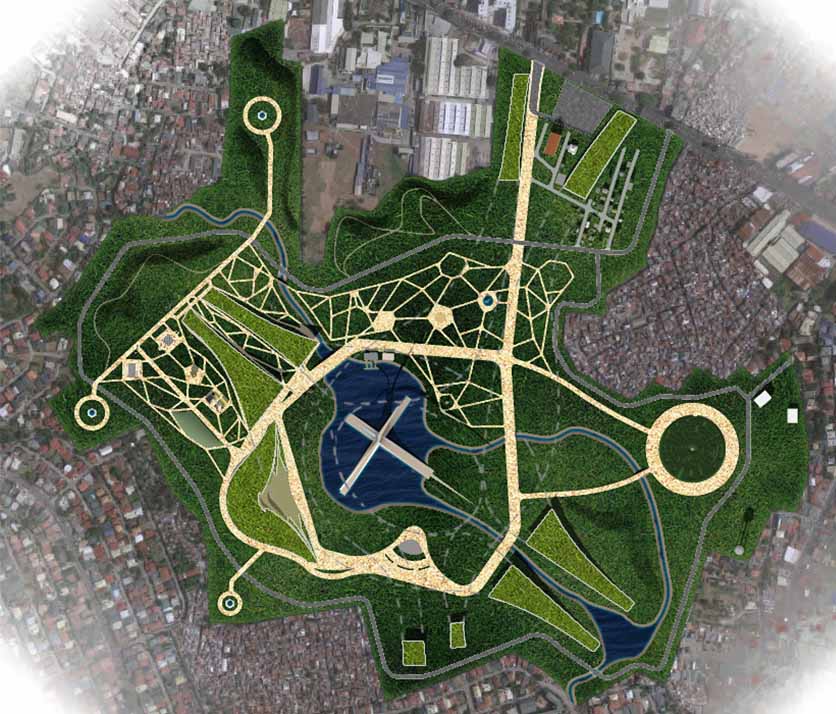
First, one must take oneself and others, whose lives one might touch, seriously. Periquet said that it is possible to improve lives, especially “if we all have that same mindset that we all have a part to play, that we can all shape the minds of everyone from the poor to the people who have the power.”
Second, go with the flow. As Jimenez-Ong put it, “These are times when we accept, and we go with the flow, and when we go with the flow, we don’t get stuck.” Do not let a crisis stop progress and reform. Javier said, “This pandemic has surrendered all of us very vulnerable without exception. This vulnerability our minds and eyes are forced to see among all other things, the inadequacies and deficiencies are urban design. While the public is lucid and angry, designers must take this opportunity to advance the agenda of excellence.”
READ MORE: The new normal is beyond this pandemic, two architects and a public policy consultant say
Third, understand the need for such and demand it. Noonan underlined that everyone needs to see healthy and environmentally sustainable buildings as a must-have more than just a nice-to-have. As citizens, know that buildings that support health and well-being are “a form of health [crisis] prevention,” and therefore a human right. As designers and developers, Jimenez-Ong urged, “We have to have the grit to realize the vision; stop finding excuses, but instead creating solutions, knowing it can be done affordably with some creativity; and, make time to share these values with those around us. Then, we get the wheel of change moving forward—influencing others . . . and hopefully including [the] government, NGOs, even banks [to] provide incentives in this country to do right, not to do wrong. And soon, hopefully, it won’t be about a new normal, it’s just a better normal for all.”
Fourth, as Des Horts advised, add value to the society by staying dedicated to a mission statement. He provided LIXIL as an example of different brands “driven by the exact same desire to create better and healthier living solutions for everyone and everywhere.” He said that now that as the world faces an unprecedented global health crisis, people need solutions to improve their personal hygiene and mental and physical wellbeing. LIXIL, with a brand history that can be traced back to over a hundred years, say that the foundation of their brand’s ‘living culture’ is “integrated functionality with refined aesthetics.” Des Horts said that this is the way they ensure that their products are always relevant to people, all lifestyles, and the times in which we live.
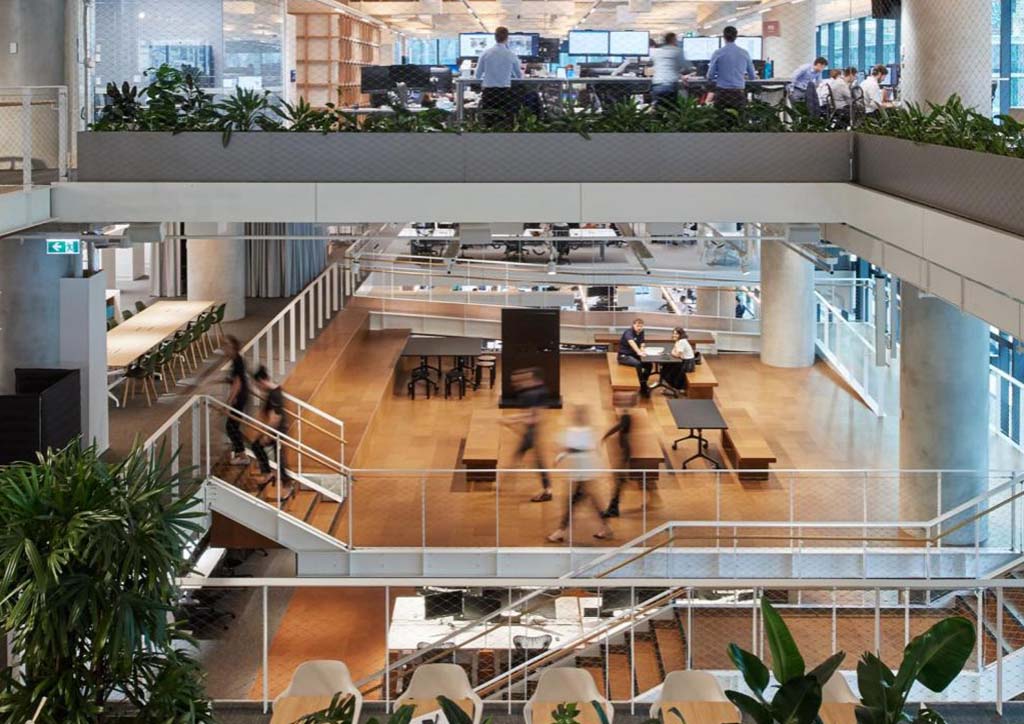
When BluPrint asked the question ‘How do you want to live?’ to the live session participants, 38% wanted to live in a world where “the built environment is healthy, safe, inclusive, resilient, and sustainable.” If everyone could make it a mission to manifest this vision and remain steadfast and committed to their convictions, then the better normal would not be so far from reality.
Lastly, think of excellence as a process more than a finished product. Periquet underscored, “If you think of excellence as a finished product, then you might feel that you’ll never achieve it, and you might even feel defeated before you start. It’s a process, it’s a mindset, it’s a path.”
Watch the full third episode of ‘Build a Better Normal’ live sessions here.
‘Build A Better Normal,’ is a three-part LIXIL Design DeepDive™ Live Sessions – Philippines webinar moderated by former BluPrint editor-in-chief Judith Torres. Stream the first live session, ‘Advising Clients in a Brave New World,’ at the American Standard Facebook page, and the second live session, ‘Co-Creating with Government: Opportunities for Positive Change,’ at GROHE Facebook page.
BluPrint is the exclusive media partner of LIXIL Design DeepDive™ Live Sessions – Philippines, co-presented by LIXIL brands American Standard, GROHE, and INAX. Design DeepDive™ Live Sessions is a LIXIL Asia Pacific regional activity, with the first webinar series hosted by India and ‘Build a Better Normal’ hosted by the Philippines.
